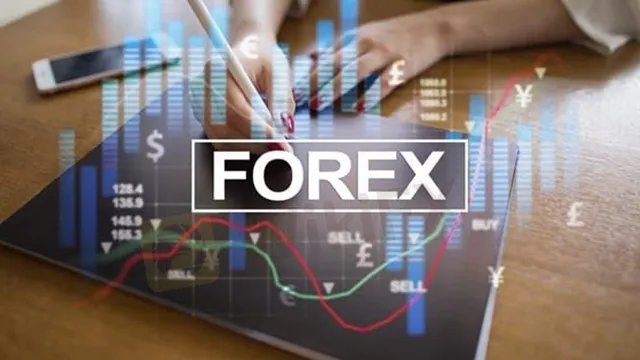简体中文
繁體中文
English
Pусский
日本語
ภาษาไทย
Tiếng Việt
Bahasa Indonesia
Español
हिन्दी
Filippiiniläinen
Français
Deutsch
Português
Türkçe
한국어
العربية
How To Trade Divergences in Forex?
Abstract:Normally, both the price and the technical indicator should move in the same direction.

And many traders use different indicators when trading forex in order to get additional confirmation for their signals. Divergence is one of the most powerful trading signals that combines price action analysis with the use of indicators to help traders look for clues between indicator and price action.
In this article, we will tell you the concept of divergence and explain how it is formed, in the context of the forex markets and relative to the indicators and outline the different types of divergences that are formed.
What Is A Divergence in Trading?
Forex divergence is defined as a case when the price of an asset is moving in the opposite direction of a technical indicator, such as an oscillator.
For example, a divergence forms on a chart when price makes a higher high, but the oscillator makes a lower high. Similarly, price makes lower low but the oscillator makes higher low. It is a warning sign that the current price trend may be weakening, and in some cases may lead to a change in the direction of the price.
The first thing to remember is that divergence itself should not be a signal to enter the market. You must have the main signal, and the divergence will act as a confirmation of this signal.
Different Types of Divergences
There are two main types of divergences, a regular divergence, and a hidden divergence. Let's explain both types in the following lines.
Regular Divergence
This type of regular divergence pattern come in two forms: Bearish Divergence and Bullish Divergence. A bullish divergence occurs during a downtrend, when the price makes lower lows but the indicator makes higher lows. As price and momentum should move in the same direction, if the indicator fails to make a lower low this is a sign that the trend may reverse. In this case, we should expect an upward movement; that is, the trader needs to get ready to buy.
A bearish divergence occurs when price creates higher tops on the chart, while your indicator is giving you lower tops. After a bearish divergence, price usually makes a rapid bearish move. Notice that this happens despite the previous bullish attitude in the price. A regular bearish divergence is a signal that the price is expected to cancel its upward trend and to switch to a downward trajectory.

Hidden Divergences
Unlike regular divergences, a hidden divergence indicates that the underlying trend may continue. Hidden divergences can also be grouped into hidden bullish divergences, and hidden bearish divergences.
To detect hidden bullish divergence, you need to pay attention to the lows of the chart, as well as the indicator. This kind of divergence occurs when the market is upward, drawing high lows, and the indicator reading lower. At times also referred to as positive reverse divergence.
As you probably guess, a hidden bearish divergence has the same character as the hidden bullish divergence, but in the opposite direction. We confirm a hidden bearish divergence when the price is showing lower tops, and the indicator gives higher tops. If you spot a hidden bearish divergence, chances are the current downtrend will continue in the future.

How to Trade with Divergences in Forex?
A divergence does not always lead to a strong reversal and often price just enters a sideways consolidation after a divergence. Keep in mind that a divergence just signals a loss of momentum, but does not necessarily signal a complete trend shift.
You can find divergence with any oscillator indicator. However, the results vary with the currency pairs and the chosen indicator. Among all, we have shortlisted the top three oscillator indicators that can be very helpful in your trading.
1. MACD
The MACD indicator can be very beneficial for finding the divergence and spotting early trend reversal in currencies. You can use the default settings of the indicator on any timeframe. However, it is better to use 1-hour timeframe. You can use take profit and stop-loss at fixed 20 pips difference or you can use the support and resistance levels as well.
2. RSI
The RSI indicator relative strength index identifies the overbought or oversold zones, themselves as entry and exit signals. Another strong trading signal is the RSI divergence indicator.
3. Stochastics
Stochastic is a widely used indicator for divergence. The recommended timeframe is 1-hour while the indicator can be used to exit the trades based on overbought and oversold conditions.
In addition, before you start trading divergence makes sure you go through these trading rules:
-Divergence can only show up in 4 different price scenarios
-For bearish divergence, the swing high prices typically correspond to an indicator's high point
-For bullish divergence, the swing low prices typically correspond to an indicator's low pointThe -slope – or the angle of the line connecting the highs and lows tells us how strong the divergence actually is
-Never chase divergence if the price action played out
Conclusion
Like all trading strategies, remember that using Convergence Divergence indicators require a certain degree of risk. Whether you are using the MACD, Relative Strength Index, or any other, you will need to carefully protect yourself from the risks of speculation.
Just like with other trading tools, you should wait for additional confirmation when trading divergences to avoid cumulating losses. Although divergences are a great tool, you can make them even more profitable if combined with other confirmation signals.

Disclaimer:
The views in this article only represent the author's personal views, and do not constitute investment advice on this platform. This platform does not guarantee the accuracy, completeness and timeliness of the information in the article, and will not be liable for any loss caused by the use of or reliance on the information in the article.
Read more

Harsh Truths About ATC Brokers Every Trader Must Know
Many regulated brokers hide the risks associated with them. They never talk about these risks and try to attract customers with appealing offers. Later on, customers discover these hidden risks and feel disappointed. Before you come across a similar situation, we want to let you know the risks involved with ATC Broker. Check out the article to discover the harsh truth about it.

8 Golden Rules to Rule in the Forex market
These are important rules that most people won’t tell you. Whether you’re new to Forex beginner or have been trading for a while, these tips can help improve your trading journey. Read this article to learn the key rules every trader should keep in mind.

Top Reasons Why Prime FX CFD is Not Worth Your Investment
Prime FX CFD is constantly grabbing headlines, but not for the right reasons. It has become an infamous name in the forex market, which, otherwise, has become the reason for many becoming financially independent globally. Investors have been taken for granted as scams keep happening. We have found some red flags with this scam forex broker. In this article, we will let you know about them. Keep reading!

5 Clear Reasons Why Ultima Markets Is Smart Investment?
The Right Investment is hard to find these days. The Forex market is full of scam brokers, and it's a tough task to find the trusted ones. However, you can check out this article to discover 5 specific reasons why Ultima Markets stands out as a reliable choice.
WikiFX Broker
Latest News
Alchemy Markets: A Closer Look at Its Licenses
Wondering Why Your International Earnings Come Less Than Expected? It's Because of Forex Markup Fees
FCA to modernise rules to unlock investment
How Fake News Sites Are Fueling a Global Investment Scam Epidemic
From Novice to Pro: Why Investors Trust Land Prime?
10-year Treasury yield ticks lower after core CPI comes in slightly lightly lower than expected
Asia-Pacific markets mixed after Trump's tariffs on Indonesia
Labubu craze to drive up profit 350%, China\s Pop Mart says
PrimeXBT Launches MT5 PRO Account for Active Traders
Central banks are increasingly buying gold from local mines as prices surge
Currency Calculator


